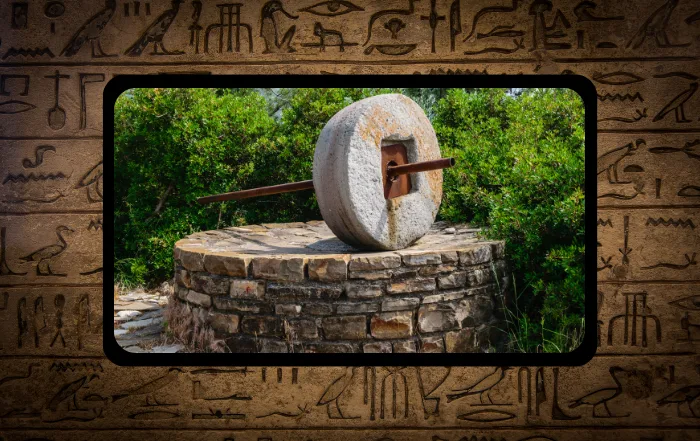Ancient whole grains were a staple food in many ancient civilizations in many countries for thousands of years, and they continue to be the preferred grains in those countries today. In the US, ancient grains are just now gaining interest, as more people are trying to improve their health with the foods they eat.
Ancient grains are higher in protein, fiber, vitamins and minerals than the refined grains (wheat and rice) we usually eat. Being a whole grain, these grains will help you feel full longer.
They can be used as a cooked breakfast cereal, added to soups and stews, salads and can also be ground to make flour for baking. A list of Ancient Grains and their benefits is provided below. Take a good look at this information and start adding these wonderful, flavorful, health boosting grains to your diet.
12 Ancient Grains And What They Can Do For You

Amaranth
It’s a seed, making it gluten-free (and tasty), but nearly all the plant can be consumed. While the seeds are similar to small oats or rice and are most popular eaten as a pilaf or oatmeal, the leaves are just as nutritious.
Amaranth leaves are very impressive in their own right and have 3 times more vitamin C, 10 times more carotene, 15 times more iron, and 40 times more calcium than tomatoes, and 3 times more vitamin C, calcium, and niacin than spinach leaves.
This multipurpose superfood is a great source of protein, fiber, and contains essential amino acids that are good for brain health.
Studies have shown that amaranth may also improve heart health, lower cholesterol, helps manage blood sugar, helps prevent heart attacks and strokes.
Buckwheat
The Mongolians introduced buckwheat (then considered a pheasant food) to Europe in the 14th century.
Buckwheat has a unique amino acid composition which provides strong cholesterol-lowering effects, anti-hypertension effects and the ability to improve digestion by relieving constipation and maintaining gut balance.
It also contains antioxidants and may help improve heart health, reduce blood sugar, help lower high blood pressure and cholesterol, and it’s gluten-free

Freeka
A very popular grain in the Middle East, whose name comes from the Arabic word meaning “to rub,” a reference to the process of rubbing away the burnt husk from the green grain.
Freekah is high in iron, calcium and zinc, in addition to its prebiotic contents, which helps the digestive system work more efficiently.
This super grain has been known to help with weight loss, maintain blood sugar levels, build muscle strength and contribute to overall eye health.
Farro
Easily among the oldest of the ancient grains, farro was called “emmer wheat” and was critical to the success of the ancient Roman troops in biblical times.
In fact, farro was a domesticated crop 10,000 years ago in the Middle East.
Farros is high in protein, dietary fiber and antioxidants while also boasting niacin, magnesium, iron, thiamine, and zinc.
Millet
Grown and consumed extensively in the African and Indian subcontinent from ancient times. Pearl millet is rich in phosphorus, which helps cells store energy. Brown millet is widely considered to be the oldest bread grain in the world. Evidence of millet flatbread dates to 8,000 years ago.
Millet is a great source of protein and fiber and may help protect against heart disease, lower bad cholesterol, help prevent type 2 diabetes, and reduce high blood pressure.
Quinoa
Quinoa is a flowering plant in the amaranth family, making it a distant cousin to modern-day spinach. Quinoa was first used as livestock fodder 6,000 years ago. It took an additional 2,000 years before humans decided to give it a try.
As a crop, quinoa is grown primarily for its edible seeds; the seeds are rich in protein, dietary fiber, B vitamins, and dietary minerals in amounts greater than in many grains. Because it’s a seed, it’s gluten-free while being a great source of protein and fiber.
This very ancient grain may help lower bad cholesterol, maintain blood sugar levels, help promote weight loss and is high in antioxidants.
Sorghum
There are 25 species of flowering in the sorghum genus. Most of which are flowering plants, with only a couple used for human consumption. Sorghum may help maintain blood sugar levels, help improve heart health, improve digestion, help lower cholesterol and high blood pressure. And it’s gluten-free.

Spelt
Also known as dinkel wheat or hulled wheat, spelt is a species of wheat that has been cultivated since around 5000 BC. In fact, it was a valuable staple throughout Europe during the Bronze Age.
Today, this old grain has found renewed interest for its health benefits including maintaining blood sugar levels, lowering cholesterol, boosting the immune system, improving digestion and even helping to maintain hormonal balance in the body.
Barley
This member of the grass family is one of the first cultivated grains, as early as 10,000 years ago. Like most grains, barley is a great source of protein and fiber. Studies have shown that this ancient grain may help promote weight loss, improve digestion, prevent gallstones, lower cholesterol, reduce risk of heart disease and help maintain blood sugar levels.

Bulger
Also known as riffoth and burghul, is made from the cracked parboiled groats of several wheat species, most often from durum wheat. The ancient grain originates in West Asian cuisine. Beyond being a good source of protein and fiber, bulger promotes heart, digestion and gut health and may help maintain blood sugar levels.

Kamut
This ancient grain is twice the size of present-day wheat, and has a rich, nutty flavor. It’s also a strong source of protein and fiber and has been used as a weight loss aid. Kamut has also been linked to lower blood sugar levels, improved digestion and a reduction in heart disease risk.

Teff
A great source of protein and fiber that may help promote weight loss. Teff has also been studied for its properties that enhance bone health, strengthen the immune system, increase circulation, maintain blood sugar levels and even improve digestive and heart health.
Now that you have gotten to know a little about the benefits of these ancient grains, start adding one or all to your diet and let those benefits get you on your way to better health!
Ancient Superfoods

34 pages that take you back thousands of years of human history to the superfoods that won wars, built empires and conquered the Medieval Ages. Find out how these potent and powerful foods can help transform your health today.


















